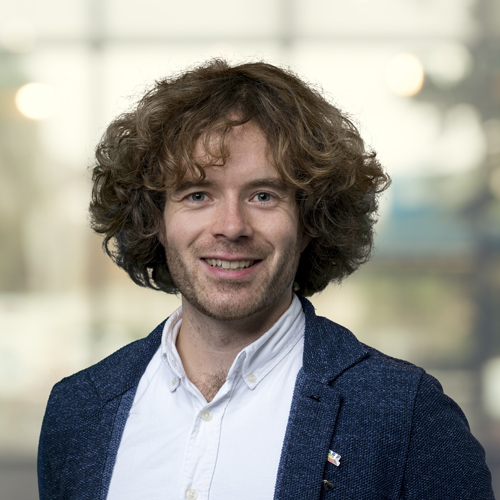
Digital Built Environment
The built environment is facing a combination of housing, climate, and accessibility challenges. Addressing these challenges is an increasingly complex and delicate balance that can only be resolved with the support of digital innovations. The Digital Built Environment (DBE) is the digital innovation research group within TNO’s Mobility & Built Environment (MBE) unit.
Innovative digital solutions for tomorrow’s society
The Digital Built Environment (DBE) is the digital innovation research group within TNO’s Mobility & Built Environment (MBE) unit. DBE's mission is to enable, accelerate, and scale up the digital innovations required to tackle these societal challenges. Through our expertise, we combine domain knowledge with data, modelling, and decision-support skills, creating practical and innovative digital solutions that are adaptable and scalable for the future.
Research areas
At the DBE research group, our goal is to shape a future living environment that achieves an optimal balance between sustainability, safety, and efficiency, with our digital innovations serving as key enablers. Our work is concentrated on four main research areas:
For greenhouses, we develop innovative systems to enable data-driven design and autonomous, sustainable cultivation, supporting global food security;
For civil infrastructure, we work to accelerate the sustainable, future-proofing of our ageing infrastructure;
For buildings, we address the housing shortage by supporting sustainable living solutions that tackle labour and material scarcity, while avoiding calamities, emissions, and waste;
For indoor climate and energy, we aim to ensure that everyone can live and work in comfortable, healthy environments, while striving for energy-neutral buildings by 2050.
By applying these innovations, we create a positive impact on society: including improved material reuse, safer buildings and structures, and reduced lifetime emissions.
Technology lines
Our research group sees digital innovations as essential for addressing societal challenges in the built environment. These advancements enable new functionalities, cross-domain integration (especially between engineering and computer science), and scaling from proofs of concept to broader sector applications, achieved through four focused technology lines:
Facilitates seamless data integration across asset life cycles. Collaborations with CGI and Microsoft have made Rijkswaterstaat’s (RWS) steel bridge data "FAIR," enabling efficient safety assessments of aging bridges.
Develops tools for monitoring assets and optimising building design, supporting market needs through enhanced design methods and automated asset monitoring.
Integrates data (ALIM) and models (AICM) into predictive digital replicas of assets. Examples include a steel bridge PDT for end-of-service-life management (Moerdijk Bridge) and a PDT for prioritising urban quay wall maintenance (Amsterdam).
Creates tools for complex, transparent decision-making in building and infrastructure design, aiding stakeholders in evaluating options based on Key Performance Indicators (KPIs) for sustainable, safe solutions.
Facilities
Predictive Digital Twin Lab
The lab is designed for experimenting with and showcasing Predictive Digital Twins (PDTs), from real-world assets to scale models. It includes a collaborative space for workshops, a technical workshop for model construction, and a website for digital displays. Furthermore, the lab enables researchers and visitors to explore digital innovations through proofs of concept and fosters creativity with design-thinking sessions and structured brainstorms.
Mobility & Built Environment software tool suite
In Artificial Intelligence & Computational Modelling, DBE develops and maintains knowledge and tools with input from research groups and external partners, supporting core impact areas. To maximise reuse across domains, these tools are accessible via the DBE software tool suite. Notable examples include the Bayesian Inference and machine learning tools, ProbEye and Harlow, as well as commercial products for high-tech greenhouses (the Hortivation (opens in a new window or tab) (refers to a different website) Suite) and the Contingentenaanpak for housing renovations.
Living labs
Living labs are real-world settings where we co-develop and test digital innovations with sector partners. At the Moerdijk Bridge, we collaborate with Rijkswaterstaat (RWS), industry, academia, and TNO's Reliable Structures group to future-proof aging steel bridges. This includes a digital twin for structured data sharing, model calibration via Bayesian Inference, and traffic load analysis.
Similarly, TNO’s Stieltjesweg building serves as a Living lab for climate control optimisation.
Data on occupancy, temperature, and CO levels is used in physics- and AI-based diagnostics. Our team is creating a digital twin to model heating and cooling demands, improving thermal performance and flexibility.

